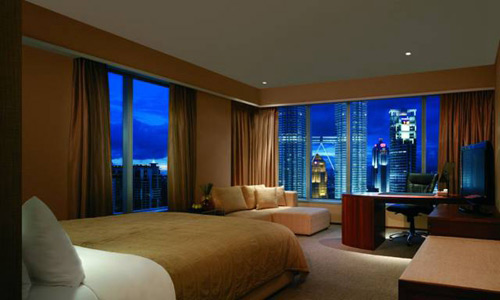
GLOBAL REPORT—With more and more hotels striving to be eco-friendly, sustainability practices have become a crucial consideration—from the development phase to the interior-design phase—for hotel designers.
HKS Architects takes an all-inclusive approach to sustainability when it comes to hotel design, according to Eddie Abeyta, principal at the firm.
“We approach the sustainability of a project holistically while taking into account everything including the site, its surrounding context, building and its systems that have a direct impact on our environment,” he said. “We strive to elevate building performance and reduce the energy demands of our buildings in both electrical power consumption and water conservation.”
He added that sustainable design sometimes starts at the development phase, where many developers are pushing for smaller space, which can lower the cost of development.
“(Developers) are striving to be smarter with where their dollars are invested,” Abeyta said. “Hotel developers today are challenging operators to think differently about how to define a luxury guest experience. Luxury is not always about scale, but also about the quality of an environment. Reducing the scale of the built environment reduces the resources, materials and energy put into the construction of that particular environment and allows greater dollars to be invested in high-touch areas. That is a unique spin on how to think differently about sustainability. Scale has a ripple effect on a project from the ground up and has the potential to have a greater impact on the bottom line as well."
Sustainable materials, interior design
Design materials should be chosen not only for their visual appeal, Abeyta said, but also for how they contribute to the guests’ well-being.
“We … strive to design environments that perform well from the human perspective in terms of enhancing the health and wellness of hotel guests,” he said.
“There is a strong influence on making smarter material selections when designing spaces and environments, something that we call ‘mindful materials’ at HKS. Being mindful of the selection of materials, products and finishes that eliminate harmful chemical compounds and ingredients that go into materials such as paints, fabrics and woods is critical to our design process. A known fact, as researched by the International Well Building Institute, states that 90% of our time as humans is spent inside a building. Therefore, it is critical that we take into account the materials we use and all other elements that affect the human condition.”
At MatchLine Design Group, designers are seeing sustainable design incorporated “throughout properties, but more specifically in onsite restaurants and guestrooms,” said Lesley Hughes Wyman, principal for the group.
“When sustainability is carried from the public areas to the guestrooms, it makes for a well-balanced experience,” she said. “While chefs are curating sustainable ingredients—produce that is locally sourced, supporting nearby farms—design concepts are following suit, bringing in local artisans and specifying products with green characteristics. In the guestrooms, the amenity offerings feature eco-friendly products. Housekeeping programs also place a strong focus on sustainability, as seen with water-saving practices for laundry.”
She added that MatchLine locally sources “specialty finishes” in materials such as wood and metal, which can serve as décor for “furniture, architectural elements and artwork.”
“It gets the community involved and excited for their neighborhood property to contribute to the design,” she said. “We look for items that can be upcycled from a renovation and worked into the design, or recycled materials such as glass, wood and fabric panels.”
Consider your eco-friendly guests
Environmentally-conscious guests are looking for hotels built using sustainable materials, but they’re also looking for locations that allow them to keep up a green lifestyle.
Hilda Impey, associate design director, FF&E, at Wilson Associates, said eco-friendly hotels can also approach sustainability from a community point of view.
“Properties (promote) accessible locations to public transport and availability of shared bicycles,” she said. “Other amenities (include) recharging stations for electric vehicles and play areas for children. Further enhancing the locality, each property promotes its local community, hosting musicians’ concerts and art.”
She added that Wilson Associates?has noticed people in more branches of the hotel industry have “aligned their thoughts” when it comes to sustainability.
“For the first time, architects, hoteliers, interior designers and consultants have aligned their thoughts with all aspects of a project conceptualization by embracing innovative ideas with global responsibility towards climate and environmentally-friendly solutions,” Impey said.
![[Intelligent Hotel Lock] YGS-9901B](https://zeimg.jiagle.com/media/2016/11/24/6037221479970596.jpg!180)








Service Hotline
Work Time:Mon-Fri 9:00-18:00
UTC+8

Sinoexpo Digital Platform
Copyright 2006-2024 Shanghai Sinoexpo Informa Markets International Exhibition Co., Ltd. All rights reserved
沪ICP备05034851号-77
 沪公网安备 31010402000543号
沪公网安备 31010402000543号